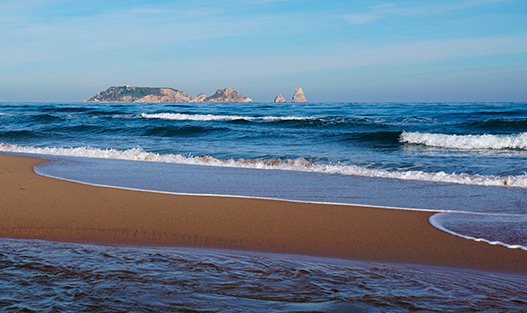Names like “Palus”, which refer to a pond or swamp, or “Mont Asperus”, which refers to a hill, gave life to this village where important feudal lords lived, such as Sansa de Santa Eugenia, Elisenda de Montcada, Violant de Bar, or Joana Enríquez, among others.
We recommend starting the visit at Plaza Cataluña and going up the paved road in that goes to Ca la Pruna House of Culture, where you can visit the Underwater Archaeological Museum and an exhibition of Catalan wines and cavas.

On the way to Pals Beach, you come to the Masos de Pals, a nucleus which was made up of a group of fortified country houses with great architectural value. The 18th-century Church of the Masos de Pals is outstanding. The walk through its main street is very pleasant and you can admire authentic peasant houses which are still inhabited today.

The so-called Grau Beach, over 1.5 km in length and 40 metres wide, is probably one of the largest and least-crowded beaches in Catalonia; you can reach it by car and it has a car park guarded in the summer season. The beach extends from the mouth of the River Daró to the beach at El Racó, in the district of Begur, and passes in front of the old terrains where the Radio Liberty Antennas were located.
The first reference to the mediaeval village of Pals is from the 9th century, although the walled enclosure dates back to the 12th century.